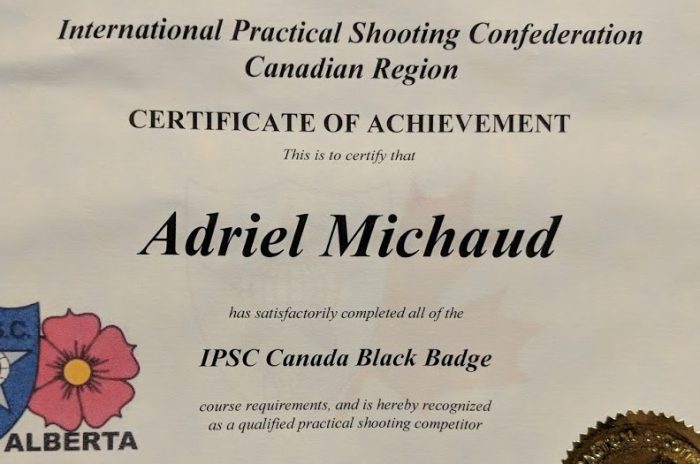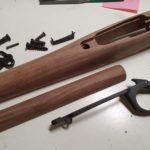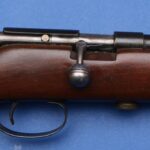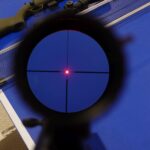I thought it’d be fun to put together a quick reference of the different kinds of shooting sports that you see up here in Canada. Without any further ado:
International Practical Shooting Confederation (IPSC)
IPSC is a timed action pistol sport: fast shooting, reloading on the move, etc. Shooters are judged by their “hit factor”: how many points they can rack up shooting targets divided by their stage time. Shooters are divided by division, which is dictated by the type of pistol and equipment they use, as well as by classification. It has a very well developed set of rules, formal structure and oversight, and is present all across Canada. Shooters must have their “Black Badge”, a certificate earned by successfully going through a training course, before they can shoot in a match. You can find matches on the IPSC website for your province and you’ll also find bigger matches on the IPSC Canada website.
International Defensive Pistol Association (IDPA)
IDPA is a timed action pistol sport. Unlike IPSC, in IDPA you have to shoot more tactically/defensively: you have to reload behind cover, accuracy is a bit more important, and stages typically prescribe how to shoot them. There are divisions and classifications separating shooters. You need to do an IDPA holster qualification course to shoot IDPA. Video on IDPA. You can find IDPA matches across Canada at IDPACanada.ca
Steel Challenge
Steel challenge is a timed pistol or 22 rifle shooting sport. Each stage is shot 5 times and your worst time is thrown out on each stage. Shooters are separated by division as dictated by equipment. There are 8 standard Steel Challenge stages that should all be similar between matches. Steel challenge is all about speed! Video on Steel Challenge. The Canadian National Steel Challenge (CNSC) website is here.
3 Gun
3 gun is a timed action shooting sport incorporating a rifle, shotgun, and pistol. There is no standardized set of rules that all 3 gun clubs use across Canada. Some clubs shoot “3 Gun Nation” style rules, others shoot USPSA Multigun, UML, or “Outlaw”: a custom set of rules. Shooters are divided by division, which is dictated by the style of equipment they use. Video about 3 Gun in Canada. You can find 3 gun matches across Canada at 3gun.ca
Sporting Clays
Sporting clays is a shotgun-only clay pigeon shooting sport where you shoot at clays that are thrown from a wide variety of spots. Different clubs will have different courses of fire setup, so there’s decent variety involved. Video about Sporting Clays. Shooters are separated by classification. You can find matches across Canada at CNSCA.ca.
Trap Shooting
Trap Shooting is a shotgun-only clay pigeon shooting sport where you shoot 25 clays thrown one at a time from a standard set of 5 positions. Shooters are separated by classification. You can find matches at the Canadian Trapshooting Association website.
Skeet Shooting
Skeet shooting is a shotgun-only clay pigeon shooting sport where you shoot from 8 different positions around a semi-circle. 1 or 2 clays come out at every station. I couldn’t find a national group, but there are provincial websites where you can find information about where to find skeet shooting across Canada.
Cowboy Action
Cowboy action is a competitive style shooting and historical enactment rolled into one. SASS is one of the bodies that standardizes and sanctions events, and you can find matches across Canada on their website. Cowboy Action shooting typically involves using 2 revolvers, a lever gun, and a break action shotgun. Video about Cowboy Action Shooting.
National Service Conditions (NSCC) (Service Rifle, Duty/Operational Pistol, Precision/Sniper Rifle Pairs)
There are a few types of competition I’m mashing in here. These are matches overseen by the DCRA in which Canadian Military, law enforcement, and civilians compete alongside each other. Multiple shooters are on the line shooting in “relays”, so these matches can accommodate a large number of competitors.
In Service Rifle, targets from 100-500 meters must be engaged from standing, kneeling, and prone positions.
In Sniper/Precision, targets from 200-800 meters must be engaged from prone.
In Duty/Operational Pistol, targets from 10-35 meters must be engaged from standing.
More information about Service Conditions is available at the DCRA website and on this post I wrote back in 2014.
Service Conditions CQB is a combined rifle+pistol course that fits both rifle and pistol shooting into a 50 meter bay. Video about Service Conditions CQB.
Canadian Rimfire Precision Series (CRPS)
CRPS matches involve using a 22LR rifle to shoot medium range (75-350 meters) (which is far for a 22), from a variety of practical and impractical shooting positions. Shooters are divided into Production (rifle less than $500 MSRP, plus optic less than $500) and Open. More information on CRPS is available on this video, at rimfireprecision.ca, and on Slam Fire Radio where we interviewed Rick from CRPS.
Outlaw Rimfire Precision Series (ORPS, similar to NRL22 in the US)
ORPS is an offshoot of CRPS. It’s 100M and in, has an incredibly reasonably priced target pack to get a club started, and new courses of fire are released each month. More information here.
Silhouette Shooting
Silhouette shooting uses small knock-down steel targets of animals shot with 22 rifles from up close, or by larger rifles and larger steel targets at distance. Competitors are separated by classification as well as standard rifle vs hunting rifle divisions. Video on Metallic Silhouette shooting. More information at Silhouette-Canada.ca
Precision Rifle Competitions
There are a variety of precision rifle competitions available in Canada.
PRS involves shooting from prone but may also make use of barriers and obstacles to shoot from.
NRA large bore is a set style of match that I really have no idea about.
F-Class is a standard Canadian shooting sport shooting off a rest or bipod from 300-1000 meters. Divisions are used to separate shooters by equipment used. More info on F-class.
Bullseye shooting
Precision pistol shooting often falls under the umbrella of “bullseye shooting”. More information is available at pistol-competition.nra.org
PPC
PPC (Precision Pistol Competition or Police Pistol Combat) is an older competition style that typically uses revolvers (because that’s what police used to use) fired from a variety of positions at various distances. Typically done in relays, these matches can fit a large number of competitors. Video on PPC More info on PPC is at CPCA-PPC.org
ISSF
For a more Olympic style of shooting, check out the ISSF, run through The Shooting Federation of Canada (SFC). ISSF shooting sports comprises of pistol, rifle, and shotgun disciplines all shooting for accuracy. Each discipline has multiple events of their own including, but not limited to, the Olympic events. Of note, this style of shooting sports was part of the original modern Olympics in Athens Greece dating to 1896! *Thanks to Edmond for the suggestion and overview on ISSF!*
What’d I miss?
Did I miss an important shooting style or ridiculously gloss over your sport? Let me know in the comments or shoot me an email!






